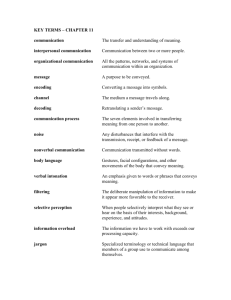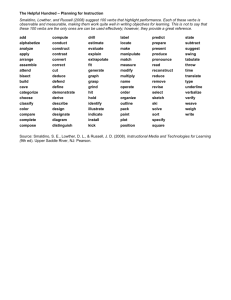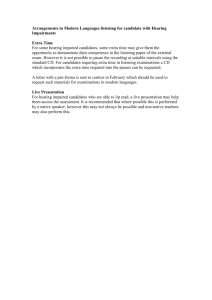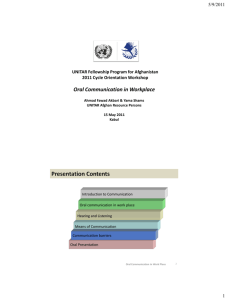Discussion 5
advertisement
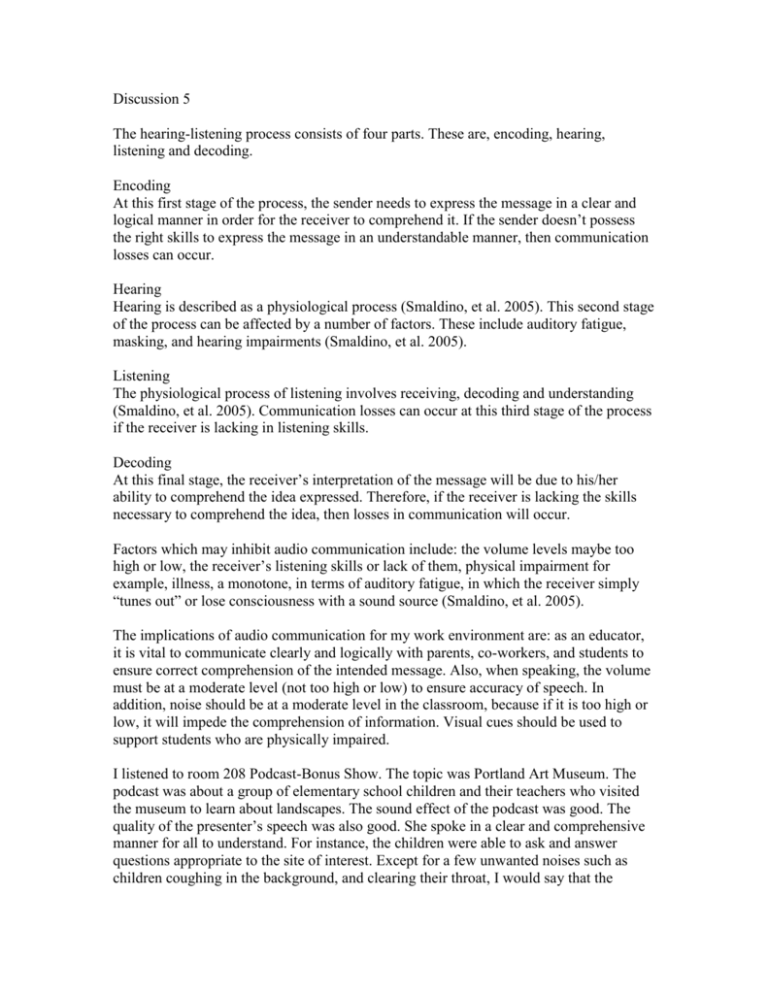
Discussion 5 The hearing-listening process consists of four parts. These are, encoding, hearing, listening and decoding. Encoding At this first stage of the process, the sender needs to express the message in a clear and logical manner in order for the receiver to comprehend it. If the sender doesn’t possess the right skills to express the message in an understandable manner, then communication losses can occur. Hearing Hearing is described as a physiological process (Smaldino, et al. 2005). This second stage of the process can be affected by a number of factors. These include auditory fatigue, masking, and hearing impairments (Smaldino, et al. 2005). Listening The physiological process of listening involves receiving, decoding and understanding (Smaldino, et al. 2005). Communication losses can occur at this third stage of the process if the receiver is lacking in listening skills. Decoding At this final stage, the receiver’s interpretation of the message will be due to his/her ability to comprehend the idea expressed. Therefore, if the receiver is lacking the skills necessary to comprehend the idea, then losses in communication will occur. Factors which may inhibit audio communication include: the volume levels maybe too high or low, the receiver’s listening skills or lack of them, physical impairment for example, illness, a monotone, in terms of auditory fatigue, in which the receiver simply “tunes out” or lose consciousness with a sound source (Smaldino, et al. 2005). The implications of audio communication for my work environment are: as an educator, it is vital to communicate clearly and logically with parents, co-workers, and students to ensure correct comprehension of the intended message. Also, when speaking, the volume must be at a moderate level (not too high or low) to ensure accuracy of speech. In addition, noise should be at a moderate level in the classroom, because if it is too high or low, it will impede the comprehension of information. Visual cues should be used to support students who are physically impaired. I listened to room 208 Podcast-Bonus Show. The topic was Portland Art Museum. The podcast was about a group of elementary school children and their teachers who visited the museum to learn about landscapes. The sound effect of the podcast was good. The quality of the presenter’s speech was also good. She spoke in a clear and comprehensive manner for all to understand. For instance, the children were able to ask and answer questions appropriate to the site of interest. Except for a few unwanted noises such as children coughing in the background, and clearing their throat, I would say that the overall quality of the podcast was good. As a matter of fact, a person with little or no knowledge about landscapes would learn a great deal of information from the audio presentation. This is an effective way to cater for especially auditory learners in our classrooms. Podcasts could be successfully employed in my work setting. I could use podcast for students to record their fluency in oral reading, and then let them review their fluency in terms of for example, length of time it took to read a passage, proper pronunciation of words etc. Reference Smaldino, S., Russell, J., Heinich, R., & Molenda, M. (2005). Instructional technology and media for learning. Upper Saddle River, NJ: Pearson Merrill Prentice Hall.
